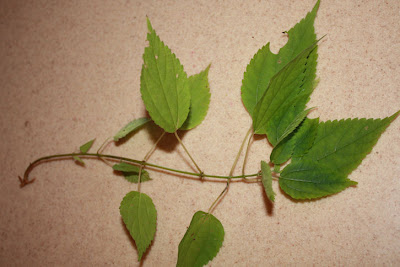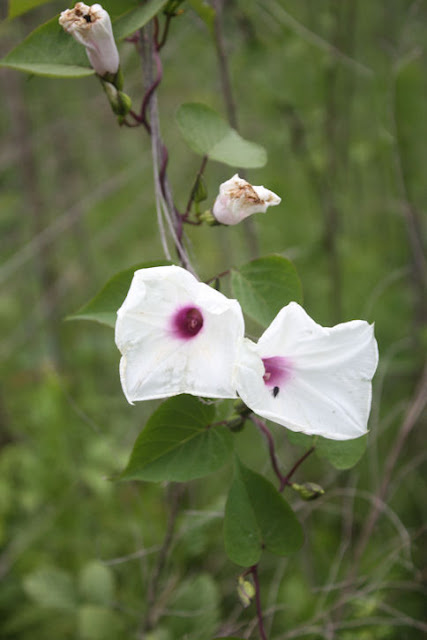One of the most nutritious and best
tasting wild vegetables in the southeast is called stinging nettle, botanical
name Urtica Dioica. There are several subspecies of this Urtica Dioica, an there are numerous
other "Urtica" species which are edible but certainly not
all nettles in the Urticaceae
(Nettle) family are edible, and some may even be toxic, so as long as we stick
to the edible ones we will be just fine.
Stinging Nettle - Urtica Dioica
There are actually a couple of subspecies of Urtica Dioica here in the eastern United
States; Stinging Nettle, U. Dioica ssp.
Dioica and the California Dioica
ssp. Gracilis. As you can see from
the picture above the leaves are toothed and usually pair off in twins off the
main stem. The other thing to look for is the stinging hairs on the stems,
hence the name stinging nettle.
~Click to Enlarge~
Stinging Nettle - Urtica Dioica
Notice above that the leaves alternate with Stinging Nettle, unlike false nettle and wood nettle.
Stinging Nettle - Urtica Dioica
Notice above that the leaves alternate with Stinging Nettle, unlike false nettle and wood nettle.
Don't let the "sting" scare
you away because usually after a short period of time after picking the plant
wilts and the stinging sensation completely leaves, but if not it is most
certainly removed by boiling, and there are really no poisonous look a likes
that has these leaves AND thing stinging hairs on the stems. There is a plant
called false nettle that resembles wood nettle, however false nettle does NOT
have the stinging hairs but instead has smooth stems.
~Click to Enlarge~
Stinging Nettle "Stinging Hairs" on Stem
~Click to Enlarge~
False Nettle - No Hair on Stems - DO NOT EAT THIS
The False Nettle in the picture above is NOT edible that I am aware of. I boiled some, just like I boiled Stinging Nettle and I can tell you that this plant produced a brown, tea like water while boiling and Stinging Nettle produced a green liquid.
~Click to Enlarge~
Stinging Nettle Leaf (Top), False
Nettle Leaf (Bottom) - DO NOT EAT FALSE NETTLE
The leaves are completely edible and can even be eaten raw under the right conditions. Young stems and leaves can be cooked as a vegetable or steamed.
Some references say
to stay away from the older leaves on older plants in summer and fall because
their prolonged use may contribute to developing gritty particles called
cystoliths which can irritate the kidneys.
The gritty particles are noticeable, and the older leaves have a much stronger
taste anyway, so it won't be hard to tell what's what.
~Click to Enlarge~
Mess of Stinging Nettle Ready to Clean
~Click to Enlarge~
Steaming with Water, Butter, Salt and Pepper
I placed a little water and some butter in the boiler to be steamed. I only steamed them for about 4 minutes. Any water that is collected is also nutritious.
~Click to Enlarge~
Sautee with Butter and Seasonings
I sautéed some of the leaves in butter as well. I added
salt, pepper and garlic. I have to admit, they were good, but a bit strong on
the butter and garlic side. Half and half with oil and butter and less garlic
would have been better. This plant doesn't really need much to season as they
are good by themselves.
~Click to Enlarge~
Finished Product, Absolutely Delicious and Nutritious
There are other ways to cook this
plant. The leaves can also be dried and used later in soups or in making an
herbal tea called nettle tea. Nettle soup is a very popular wild soup in
Europe.
This is one of the top vegetables as
far as taste, edibility and nutrition. It has other valuable uses as well.
Leaves may be dried for winter use and were often used to make the nutritious
nettle tea. Also this plant has chemical properties allow it to be used to
curdle milk. The plant has been popular for making cordage over the years and also
has medicinal uses.

















